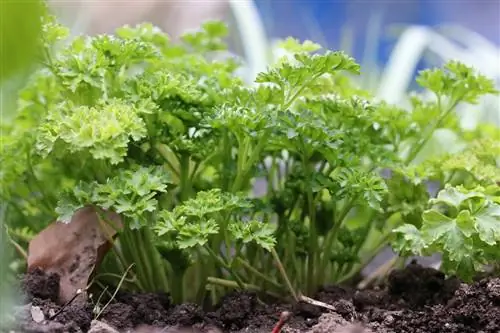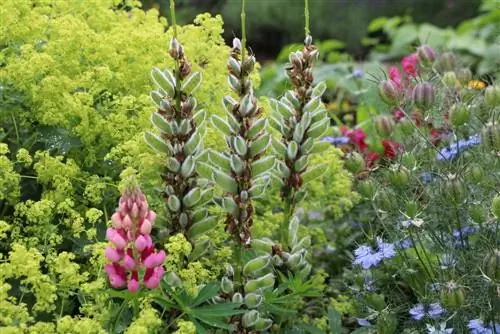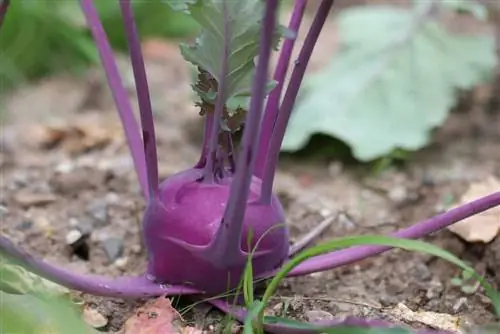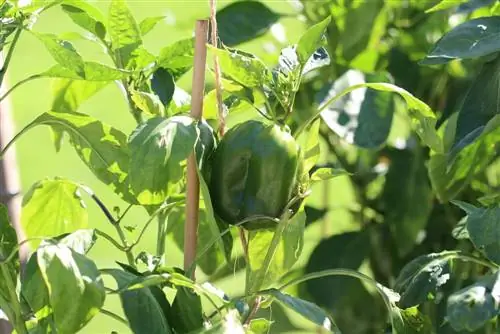- Author admin [email protected].
- Public 2023-12-17 03:39.
- Last modified 2025-01-24 12:45.
This herb is not only very aromatic, but also full of vitamins, minerals and trace elements. One more reason to sow them in your home garden or in a pot on the balcony.
Best time
Due to its origin, this culinary herb is a heat-requiring plant, which of course also affects the time of sowing. The soil should have a temperature of at least eight degrees, otherwise there could be problems with germination. Depending on the weather, these temperatures are reached around March/April. Ideally, the seeds should be planted in the ground in July/August, then they grow particularly quickly and can be harvested until autumn.
Since this plant is a biennial herb, it will sprout again next spring. If you decide to sow as early as possible, it is advisable to protect the seeds with plastic covers or to sow them in a cold frame. Theoretically, pots can be sown all year round, usually from February to March. In addition, the plants can also be grown in pots and then planted out.
Lunar calendar
If you follow the lunar calendar when sowing, you can limit the timing a little more precisely. This should have a particularly effective effect on growth. The forces of the moon are responsible for this, and are said to influence not only the tides, but also the juices inside the plants. When gardening according to the lunar calendar, this culinary herb belongs to the group of plants that should be sown on the so-called leaf days.
Tip:
It is not clear whether the lunar calendar can actually affect the growth of plants. However, there are experiences from hobby gardeners that suggest that you should definitely try incorporating the lunar calendar.
Create optimal conditions
The seeds of Petroselinum crispum have the property of germinating poorly, very slowly and unevenly. It can take several weeks until the first seedlings appear. But with good preparation you can significantly improve the germination conditions.
- first find the right location
- If site conditions are poor, germination may fail completely
- Parsley seeds are so-called dark germinators
- short-wave light would impair germination
- therefore choose a partially shaded location
- as well as a permeable and humus-rich soil
- Soil should be thoroughly loosened and freed from weeds
- Incorporation of some ripe compost is beneficial to germination
- especially in poor soils
- fresh fertilizer would affect germination
- additional support for germination by soaking the seeds
- Place it in lukewarm water for several hours
Tip:
Petroselinum crispum is one of the umbelliferous plants. This means that it is incompatible with itself and other umbelliferous plants such as dill, fennel or celery, which should be taken into account when sowing.
Sowing in the bed
If the soil and outside temperatures are appropriate and the soil has been thoroughly loosened, freed from weeds and smoothed, sowing can begin.
- draw appropriate rows of seeds
- at intervals of 20-30 cm and approx. one to two centimeters deep
- mix previously soaked seeds with a little sand when sowing
- is intended to prevent the seeds from sticking together
- spread the seeds thinly in the grooves
- then cover with soil
- so that enough seeds germinate, it is better to create additional rows
- keep the soil sufficiently moist for the following four to six weeks
If the soil dries out in the meantime, there is a risk that the seeds will become rotten and can lie in the ground for up to two years until they germinate or germination will not occur at all. If the young seedlings are large enough, they can be transplanted, both in the bed and in the pot.
Tip:
Tightening a string not only makes the saturation rows straight, you can also easily locate them during the germination phase and remove weeds regularly without causing damage.
In the pot
To grow in a pot, fill seed trays or small pots with sifted, low-nutrient potting soil and press it lightly. Distribute the parsley seeds on top and cover them again with substrate. The covering substrate layer should be about one centimeter thick.
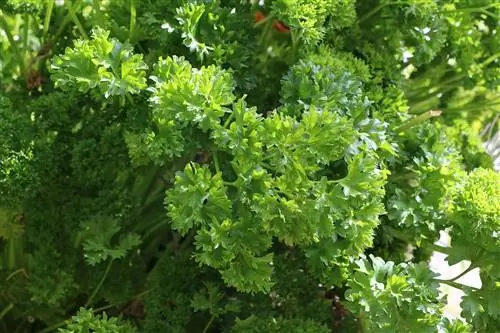
After pressing again, the soil is moistened, ideally using a conventional spray bottle. Now put the whole thing in a warm, not sunny place. The germination temperature should be between 20 and 25 degrees. As soon as the first seedlings are visible, they can be placed a little cooler.
Tip:
In order to harvest enough leafy greens, you should sow up to ten seeds per pot, or more for large pots.
Pricking out seedlings
In most cases, the fine seeds are sown too densely, so they have to be separated when the time comes. This moment has come when the young plants have developed additional leaves after the actual cotyledons. Then they are strong enough to be planted in their final location.
Plants that were sown in spring usually need a little more time until they are large enough to separate. August sowings are a little quicker, they germinate more quickly and can be planted earlier. A distance of around 10 cm is recommended between individual plants and around 20 cm from other vegetable plants.
Tip:
If you want to prevent sowing too densely, you can do so-called marking sowing with radish seeds, where you mix the two. When the parsley plants start growing, the radishes can already be harvested, thus making space.
Collect your own seeds
If you don't want to buy seeds, you can easily harvest and sow them from parsley that you already have. To do this, the plants are allowed to bloom, which only happens in the second year between June and July. If the seeds are ripe, they can simply be picked off. Then let them air dry for a few days. They can then be sown. Leftover seeds can be stored in a paper bag for next season. Some of them can germinate for up to three years.
Caution poisonous
During flowering, parsley produces toxic apiol, an essential oil in high concentrations, which can cause he alth problems. Consequently, they should no longer be consumed after flowering and pregnant women should also avoid them. In general, you should only enjoy this herb in moderation.

